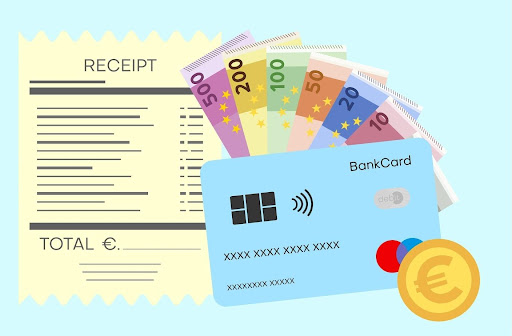
Invoice management can be daunting, especially when you have multiple clients and invoices to keep track of. Without effective structure and procedures in place, it can be simple to neglect crucial details, resulting in late payments and dissatisfied customers. Yet, managing several invoices and clients may be made simpler and less stressful by using a few essential tactics.
In this post, we’ll look at some of the best practices for efficient invoice administration, such as employing technology to speed up the procedure, creating explicit payment terms, and putting in place a system for monitoring and following up on payments. These suggestions can help you manage your invoicing and ensure your clients are content.
Every firm has always relied heavily on invoicing. Hence, effective commercial receivables management is crucial for every company, regardless of size. As it involves dealing with the records of several clients, their transactions, historical records, credit information, and much more, the invoicing process can become tedious. Every firm must take the crucial step of managing its bills in a simple and organized way.
Managing Invoices For Growing Customers
1.Using Computerized Payment Methods
Today’s businesses should all provide online invoicing and payment collection with various invoicing software. With the aid of such software, invoices may be delivered via postal mail, and the many payment gateways offered by your software make it simple to accept a wide range of online payments. It will help you manage your billing operations with many customers more efficiently and save time and money. Because all of your transaction data is housed on a single platform, tax filing hassles are also decreased.
2.Consider Outsourcing
Outsourcing involves the practice of employing a third-party service provider to carry out duties or deliver services that are generally done internally. When it comes to managing invoices, outsourcing could entail working with an accounting specialist or virtual assistant to take care of duties like creating and sending invoices, monitoring payments, and following up with clients.
Outsourcing can give you more time to devote to your company’s other priorities, like marketing, sales, or product development. Second, it can assist in ensuring that billing chores are completed accurately and quickly, lowering the possibility of mistakes and late payments. Last but not least, it might give you access to specialist knowledge you might not otherwise have, like accounting or bookkeeping.
When considering outsourcing, it’s crucial to carefully assess possible service providers and ensure they possess the required expertise, credentials, and references. To ensure everyone is on the same page, you should also specify the scope of the task and the expectations upfront.
3.Use Cloud-Based Invoicing Software
You may easily manage your clients and bills using cloud-based invoicing software. These software programs can be accessed from any computer or device with an internet connection since they are stored on remote servers. The use of cloud-based invoicing software has the following advantages:
- Automates the procedure: These software programs automate every step of the invoice generation and -sending process, including the tracking of payments and the reminder-sending.
- Consolidated storage: Using cloud-based invoicing software, you can save all of your invoices and associated documentation in one place. As a result, managing and accessing all of your bills in one location is simple.
- Simple Collaboration: Cloud-based invoicing software makes it simple to share invoices and manage payments among numerous users if you work in a team or interact with others on projects.
- Saves time: By streamlining the entire invoicing process, cloud-based invoicing software helps you save time and concentrate on other crucial duties.
- Increased accuracy: By automating computations and ensuring that each invoice contains all relevant information, these software solutions help eliminate errors and inaccuracies in billing.
- Real-time data: You may access real-time data on payments and invoices with cloud-based invoicing software. This lets you keep tabs on your financial situation and make wise business decisions.
4.Bulk Billing
It would help if you determined the most effective technique to manage billing for some clients. One invoice at a time, creation takes a lot of time, is tedious, and is prone to mistakes. Choose software that allows you to bill several clients simultaneously and has a straightforward user interface. Numerous programs enable you to bulk submit numerous invoices; some take advantage of simple Excel sheet uploads to produce large invoices.

5.Avoid Regular Delays.
There may still be obstacles to getting paid on time, even when you use online invoicing software for small businesses and invoice templates. You may speed up your cash flow and save time by being aware of some of the usual delays below.
Invoice sent to the incorrect person: The person who handles your client’s accounting might not be your main point of contact during the project. Ask who should receive the invoices to avoid needless back and forth.
Unclear parameters of the payment schedule: Before the project begins, reiterate the payment schedule during the stages of creativity and final collaboration. Before starting any task, it never hurts to include these payment terms in writing. You and your client could avoid hassles if the payment, cancellation, and return conditions were explicit.
Billing on an inconvenient day: Sending your invoice when payment is difficult, such as on weekends or holidays, is best avoided. Before the transaction, agree on a convenient payment schedule for both you and the client. Automation can schedule invoices for the client’s most likely viewing time. Don’t forget to send a final invoice once the job is finished.
6.Regularly Check Your Account Receivables.
Make sure to frequently examine your accounts receivable as you create an effective procedure for managing invoices. Like with any new procedure, you might need to make adjustments until you find the one that works the best for your company.
To ensure you’re sending your invoices on time, that electronic payment alternatives are operating without a hitch, and that payments arrive before or on time for their due dates, go over each stage of the invoicing and payment process. Consider ways to encourage your clients to submit payments on time if you see some are late, such as discounts for early payments, late fees for late payments, or altering payment schedules going ahead.
7.Be Mindful Of The Due Date
Depending on the kind of project you are working on, you must have a clear payment schedule. It would help to choose when and how much you will be paid. You must issue an invoice for the services you supplied, even for little tasks. The most popular invoicing schedules to choose from are:
- Interim invoice
Many customers with limited financial resources frequently choose not to pay for everything at once and look for ways to save money while a business is just starting. They request that the payments be divided into manageable installments at specific billing cycles. These intervals typically depend on how much time has passed or when specific project components are completed. Clients frequently request a final invoice summarizing all the prior billing information after the project.
- Final invoice
When the project is over, you can send a final invoice outlining the entire project’s work, but make sure you’ve also issued interim invoices. If those interim invoices have been paid, specifics must be provided, and you should compile a summary of the outstanding total sum. Sending a final invoice clearing any outstanding balances is a recommended practice even after being fully paid. When you use the best invoice software for small businesses, these are handled extremely conveniently and methodically.
- Recurring invoice
The best technique is to use recurring invoices since they guarantee a steady cash flow. If you operate with the same clients for a long time, the finest invoicing software for small businesses may automatically create a recurring invoice and bill the anticipated payment schedule. By doing this, you and your customers will agree on a billing cycle (weekly or monthly), after which the bill will be created automatically. It will become ingrained in the client’s routine, causing them to pay promptly.
10.Regular Communication With Clients
Effective billing management requires regular client interaction. By keeping in touch with your clients, you can tell them about the progress of their invoices, respond to any issues or inquiries they might have, and develop stronger bonds that might result in repeat business.
Here are some pointers for keeping in touch with clients:
- Use a range of communication means: To stay in touch, it’s necessary to employ various communication techniques, including email, phone calls, and video conversations.
- Take the initiative: Don’t wait for customers to get in touch with you; instead, make the first move and get in touch to provide them with updates on their invoices, respond to their inquiries, and handle any problems.
- Be careful to communicate with clients in a straightforward, concise manner by avoiding technical jargon and difficult phrases.
- Listening to clients’ issues and feedback is important when engaging with them. By doing so, you will better comprehend their requirements and adjust your communication style to suit them.
- Specify goals: Be clear with clients regarding the processing of invoices, the timing of payments, and any necessary follow-up communications. This can help prevent misunderstandings and guarantee that everyone speaks the same language.
By communicating with them frequently, you can foster closer ties with your customers and ensure the billing process is quick and easy.

11.Prioritize High-Value invoices and Clients
According to how valuable they are to your company, high-value clients and invoices should precede those of other clients and invoices. High-value clients are those who currently generate the greatest revenue or have the potential to do so soon. High-value invoices are those with higher dollar amounts or profit margins.
You can ensure that high-value clients and invoices get the attention and care they deserve by prioritizing them. This might improve your communication with them and strengthen their loyalty to your company. Concentrating on the most lucrative clients and bills can further ensure that you are optimizing income and profits.
You can use various strategies, such as establishing clear goals for each client, allocating a dedicated account manager to each high-value client, providing these clients with exclusive incentives or discounts, etc. Also, you may devote more time and resources to these clients’ projects while ensuring their invoices are processed and paid on schedule.
Conclusion
Although managing several invoices and clients can be intimidating, it is much easier to do it with the appropriate tactics. To simplify the invoicing process and enhance your financial management, try using cloud-based invoicing software, establishing explicit payment conditions, and prioritizing high-value clients and bills. By putting these best practices into practice, you can save time, minimize errors, and guarantee the satisfaction of your customers, all of which will help your company expand and succeed in the long run.

Leave a Reply